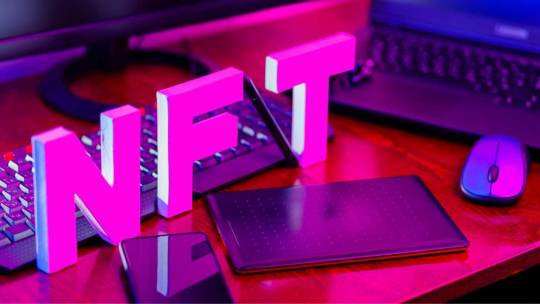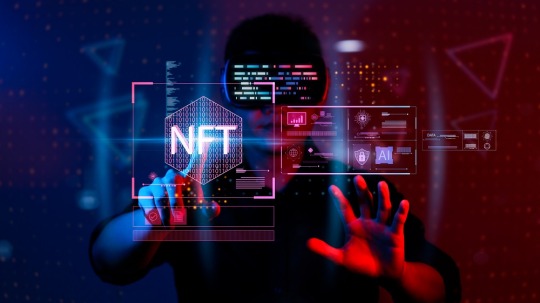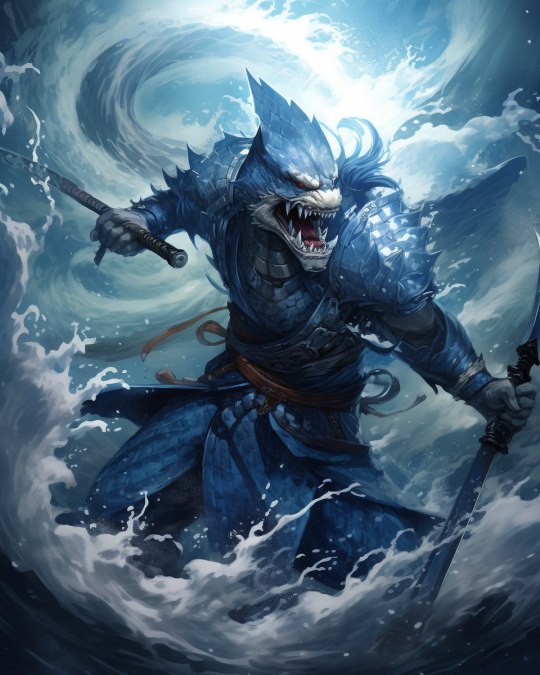Text

AI Art | MagicShot.ai
Prompt: Black model with red and cream outfit.
0 notes
Text

AI Art | MagicShot.ai
Prompt: Sleeping cat with sunlight on the face.
#AIArt #AI
0 notes
Text

Beyond Beeple's Millions: How NFTs are Changing Everything From Video Games to Watches
Imagine a world where digital art can sell for millions, concert tickets can't be forged, and your favourite video game sword can be sold to another player for real money. That's the world of NFTs, and it's not just science fiction anymore.
NFTs, or non-fungible tokens, are a type of digital certificate stored on a blockchain, a special kind of digital record-keeping system. Unlike Bitcoin, where one Bitcoin is the same as any other, each NFT is unique and can't be replicated. This makes them perfect for proving ownership of digital assets like artwork like Cryptopunks, music, or even in-game items.
But NFTs are about way more than just fancy digital art. Let's dive into how this technology is transforming businesses of all kinds:
1. Tracking Your Fancy Watch from Factory to Wrist
Imagine buying a luxury watch. How can you be sure it's real and not fake? NFTs can help! An NFT can be linked to the watch, containing information like where it was made and who owned it before you. This makes it nearly impossible to counterfeit, and you can easily track the watch's history. No more worries about buying a fake Rolex!
2. Buying a House with a Click (or a Tap)?
Buying a house can be a complicated process with tonnes of paperwork. NFTs could change that. An NFT could hold all the important information about a property, like its size, location, and ownership history. This would make buying and selling houses faster, easier, and more secure.
3. Protecting Your Digital Identity
In today's digital world, our identities are constantly at risk of being stolen. NFTs can help keep us safe. An NFT could be linked to your online identity, proving who you are. This would make it much harder for hackers to steal your personal information.
4. Owning Your In-Game Items (and Maybe Making Money Off Them!)
Ever spent hours grinding away in a video game to get that super-rare sword? NFTs can make those items actually yours. With NFTs, you could own your in-game items, like weapons, outfits, or even virtual land. This means you could sell them to other players for real money, opening up a whole new way to make money from gaming.
5. Tickets You Can Trust
Concert tickets are a nightmare to deal with. They can be lost, stolen, or even forged. NFTs can solve this problem. An NFT ticket would be stored securely on your phone, making it impossible to lose or counterfeit. This would make it easier and safer to attend events..
6. A Whole New World: The Metaverse
The metaverse is a hot topic these days. Imagine a giant, online world where people can work, play, and socialise. NFTs will likely play a big role in the metaverse. They could be used to represent things like virtual land, avatars, and even clothing. This could create a whole new economy within the metaverse.
7. This is Just the Beginning
NFTs are a new technology with a lot of potential. We've only just begun to explore the possibilities. As NFT technology continues to develop, we can expect to see even more innovative uses emerge. So, the next time you hear about NFTs, don't just think about expensive digital art; this can be possible when you use a good NFT portfolio tracker Think about a future where everything from your watch to your concert tickets can be tracked, secured, and even owned in a whole new way.
0 notes
Text
Role of NFTs in Social Media Platforms

NFT, creates new possibilities by owning the network digital system, increasing the interest of fans of the created art, music, and sports. The group is now using NFTs to sell digital art, music, and collectibles. Recently, NFTs have been appearing on various social media platforms, creating new revenue streams and driving user growth.
How has NFT been implemented in social media platforms?
Since the days of MySpace and the early years of Facebook, social media has changed a lot. Today, social media platforms are a place to communicate, entertain, and share information. Creating an NFT can create a profitable relationship with social media by expanding the user base and generating new revenue streams. This will simplify your work for NFT content approval, but you need a good NFT wallet tracker to identify the best NFTs.
Social media helps NFT companies collect user data, which can be used to improve customer service. These digital companies contained similar information about the assets they represented, such as the name of the manufacturer or ownership history. With this data, social media companies can monitor users' usage and their preferences, enhancing the overall user experience and tracking NFT-related engagement.
In addition, social media platforms provide more control over your convenience by using your affiliates without the need for third-party exchanges. NFTs provide an additional source of revenue for social media companies through transactions. NFTs benefit content and social media organisations by creating foundational content on your platform.
NFT's own social media platform
Twitter
Twitter is moving forward with the adoption of NFTs. In March 2021, a former Twitter user, Jack Derry, sold his tweet as an NFT for $2.9 per minute. Since then, the NFT platform on Twitter has included a feature called "Super Follows" to seek out more reviews of your reviews. This allows creators to charge customers for access to special features.
Twitter has announced a new relationship with several NFT portfolio trackers, including OpenSea and ANZALI. It allows users to buy, sell, and display NFTs by tweeting helpful suggestions.
Instagram
Popularity began including NFTs on Instagram for sharing photos and videos. In May 2020, "Instagram Shop" was launched on Instagram, allowing users to create products for the platform on behalf of directors. Recently, a "collection" feature is being tested on Instagram, allowing users to create NFTs of their choice and display digital assets on their profile. This feature is currently available to a different group of creators and will likely be expanded to more users.
Facebook/Meta
Facebook, now called Meta, is trying to find a new direction on its platform. An example is Horizon Workroom, a virtual reality platform that allows users to create and customize their avatars. Users can purchase unique wardrobe items for their avatars using NFTs from the OpenStreetMap marketplace.
The activation of Meta GIF will increase its product. The idea is also to allow Meta users to showcase your NFT collection on your profile, increasing market visibility and creating more value for the NFT masses.
Tiktok
Searching for a short video on a popular Force Ticket and NFT integration. In September 2021, Ticket announced a joint venture with the Ethereum Layer 2 solution to launch its own NFT collection. The platform is also partnered with marketplaces like OpenSea, which enables creators to sell NFTs. These artists provide a source of additional income to Kottak by showcasing their digital art to their huge user base.
Youtube
YouTube, one of the largest video-sharing platforms, is planning to implement NFTs. For example, a creator could sell a differently-revealed video, an unloved song, or a personal message as an NFT. This will serve as a measure of ownership for the sale, giving you a unique way to showcase your digital content to your friends.
YouTube's "YouTube NFT Market Place" is being launched, and built alongside the platform's existing creator tools. Creators can create and sell their NFTs in the style of YouTube, with a platform similar to your current revenue generation model, with each sale.
0 notes
Text
How to access and use your personal digital content

What can you do now during NFTs and what are the ways you can exchange your digital assets? I think and explore this romantic topic!
🔷 Is there entertainment?
NFTs, or the unique symbol, is the digital world in the new update. Through the ability to create additional digital products on the Blockchain, you can write music or video or even access any digital content on the go. Compared to today's limited, a lot of money is provided with NFTs and other things that cannot be done without it, it is very nice.
🔶How can I use NFTs?
1️⃣Wonderful and integrated feature: If you have skills, you can exchange your skills there is also a beach available. It is not possible that you have only a little money, but only when you have a new baby can you feel better. NFT markets are available on the Internet, where you can see all the artists and artists of your choice, and it is possible to communicate with each other. There are a lot of platforms in the market that can help you related to NFTs but you have to look for the best NFT wallet tracker that will help you.
2️⃣ Music and Video: Music and video products can also be used for NFT. During the track of your music or video, you will need to register a special version of your music so that you can get a limited version of the clip, such as special content. This is a reminder of the occasion or stoppage of work, your thoughts about building debt and not taking risks can also be used with the help of simple accessories.
3️⃣ Real estate and virtual games: Online and virtual games, NFTs game I can experience similar elements in the game. Players can enjoy their fun games and actually have fun at the beach and shopping. This area exists temporarily and displays coffee.
4️⃣ Unique content and content: A lot of unique content and content can be presented, but there is no limit, there can be millions of people. This is a great way to improve your custom branding and promotional logos, where you can create them and get on the right track.
🔷 What are the advantages of large-scale, manufactured companies?
1️⃣ Innovative Products: Large companies often have the resources to create new products that make everyday life easier. For example, they can create appliances that are not only stylish but also enhance safety and comfort.
2️⃣ Consistent Quality: Thanks to comprehensive manufacturing techniques, these companies can maintain consistent safety standards across all their products. This means customers can trust that the products they buy are safe and reliable.
3️⃣ Intellectual Property: Big companies have the ability to invest in the latest technology and research. This investment may lead to new patents. Owning these patents can be very lucrative, providing a steady income long after initial product development is complete.
🔶 Happy Decision Making:
1️⃣ Rights: Strict controls in trade can help everyone understand their own limits and advantages because certain rules and advantages are set to be negotiated at the wider level of trade.
2️⃣ Reaching your full potential: Setting important goals and pushing your limits can lead to significant improvement and tremendous personal satisfaction.
3️⃣ Respect for Institutional Ownership and Development: If someone claims ownership of a specific property, unauthorized persons have access. It is important to respect or act responsibly.
🌟The new era of digital content 🌟
As we consume more digital content, platforms like NFTs are finding new ways to discover. Whether you're an artist, musician, gamer, or influencer, take advantage of platforms like these to offer new, innovative ways to engage and engage with your fans. Also, choose the best NFT Portfolio Tracker which will help you in everything.
0 notes
Text
Asia Innovations Group Teams Up With AI3 Labs for Live-Streaming NFTs Powered by Generative AI

In a groundbreaking move where artificial intelligence meets blockchain, Asia Innovations Group Limited ("ASIG" or the "Company") & AI3 Labs announce an exciting partnership. Together, they're creating the world's first live-streaming interactive non fungible tokens using Generative AI. The Company plans to seamlessly integrate AI3 Labs' AI NFT products into its social entertainment apps, which boast over 700 million registered users spanning 150 regions. This innovative platform, developed in collaboration with Caliber Venture Builder, introduces a set of groundbreaking features set to revolutionize the Web3 application domain.
AI3, utilizing Caliber's proprietary technology, aims to provide an easy-to-use Web2-like experience. This will enable gasless transactions and incorporate embedded wallet technology, all made possible through Account Abstraction and significantly reduced transaction costs. The roll-up technology, designed for scalability, currently supports 5,000 transactions per second (TPS) and is expected to surpass 100,000 TPS by 2025.
Dr. Luu, a prominent figure in the blockchain field with a Ph.D. in Computer Science, leads Caliber. "The key to bringing in the next billion Web3 users is speed and low transaction costs," says Dr. Luu. "We're thrilled that AI3 Labs has embraced this technology, empowering creators to fully own and monetize their work."
AI3 Labs' overarching goal is to decentralize the economic gains from AI creations by placing them on a blockchain, ensuring maximum benefits for individual AI content creators.
The live-streaming interactive NFT platform is just the beginning for AI3 Labs, with plans to migrate to its own Layer 3 AI3 hyperchain later this year. This transformative initiative is set to redefine the standards of Web3 applications, ushering in a new era of accessibility, efficiency, and user experience to bring the next billion users on-chain.
The project is currently in development and is expected to launch in the middle to late 2024.
0 notes
Text
MixMob Secures Rights to Feature Star Wars Stormtrooper in Solana Game

MixMob, a gaming platform on Solana, has landed a deal to include the iconic Original Stormtrooper from Star Wars in its card racing game, Racer 1. The Stormtrooper character, famous since its debut in the 1977 film Star Wars: A New Hope, will be transformed into non-fungible tokens (NFTs) by the second quarter, according to a press release from MixMob.
This licensing agreement marks the beginning of MixMob's official strategy for obtaining licenses. The company aims to acquire three more licenses throughout 2024, as revealed by a representative from MixMob.
The Stormtroopers, known as soldiers in the fictional Star Wars universe, hold a special place as one of the most recognizable figures in the film industry.
In terms of financial movements, MixMob's governance and value accrual token, MXM, has seen a 1.2% increase in the past 24 hours, as per available data. Meanwhile, the CD20, a measure of the broader crypto market, has experienced a notable 6.4% rise.
As MixMob ventures into the world of officially licensed content, this move highlights the growing intersection between the gaming industry and iconic intellectual properties, promising an exciting fusion of entertainment and blockchain technology for players on the Solana network. Keep an eye on MixMob as they plan to unveil more licensed content throughout the year, enriching the gaming experience for enthusiasts and collectors alike.
0 notes
Text
👑 Tensor: The King of Solana's NFT Scene 👑
In the realm of NFTs, one platform reigns supreme on Solana: Tensor. With a staggering 77% market share, Tensor's NFT marketplace has become the go-to destination for collectors, investors, and creators alike. But what sets Tensor apart from the rest, and how did it ascend to the throne? Let's delve deeper into this fascinating journey.
🚀 The Rise of Tensor: Tensor's ascent to dominance in the Solana NFT market has been nothing short of extraordinary. What began as a promising concept swiftly evolved into a sensation, captivating individuals from all corners of the globe. But what makes Tensor so irresistible? Let's unpack the magic behind its allure.
💎 Why Tensor Reigns Supreme: First and foremost, Tensor simplifies the process of buying, selling, and trading NFTs to make it accessible to everyone. You don't need to be a tech genius to navigate its user-friendly platform, and its robust blockchain technology ensures utmost security and reliability.
Moreover, Tensor boasts exciting collaborations with artists and gaming companies, resulting in a treasure trove of diverse NFTs. From exquisite artwork to exclusive collectibles, there's something to captivate every enthusiast. And with Tensor's popularity soaring, there's always a thrilling new discovery awaiting exploration.
🌟 The Impact of Tensor: With Tensor firmly establishing its dominance in the Solana NFT realm, it's revolutionizing the landscape for investors, collectors, and creators alike. Investors recognize Tensor as a lucrative opportunity to capitalize on the burgeoning NFT market. Collectors revel in the platform's vast array of NFT offerings, while creators value its global reach for showcasing their work.
🎉 Conclusion: In essence, Tensor stands tall as the undisputed ruler of the Solana NFT scene for a multitude of reasons. Its intuitive interface, steadfast security measures, and diverse NFT selection make it a powerhouse in the digital realm. Whether you're seeking investment opportunities, building your collection, or showcasing your creativity, Tensor has everything you need and more. So why wait? Embark on your NFT journey with Tensor and experience the magic firsthand!
0 notes
Text
Leveling Up: How NFTs are Gamifying the Online Casino Experience in Australia
Dive into the world of online gambling in Australia, where operators are revolutionizing the player experience with gamification and NFT technology. From PvP tournaments to loyalty programs redefined, discover how these innovations are shaping the future of online gaming. But proceed with caution and stick to reputable, regulated casinos for a safe and thrilling experience.
0 notes
Text
NFTs Pose Challenges in Figuring Out Their Value

When digital artist Beeple sold an NFT for nearly $70 million, it sparked discussions among accountants about how to value these unique digital assets. NFTs, or nonfungible tokens, represent ownership and authenticity of digital items and have become a hot topic due to their high prices. However, determining their value for accounting purposes is not straightforward.
A New and Growing Market: NFTs are a type of digital cryptoasset that uniquely represents both tangible and intangible items. They use blockchain technology to establish ownership and are traded on various marketplaces. The popularity of NFTs arises from their ability to give artists control over their creations, ensuring proper compensation and usage.
What is an NFT?
NFTs can represent a variety of digital objects, from art and music to videos, tweets, and even real estate. Each NFT has a distinct digital signature, certifying its uniqueness. While traditional assets like Bitcoin represent a unit of currency, NFTs represent ownership and rights to access and potentially exploit digital assets.
Valuation Challenges: Valuing NFTs is a complex and evolving task. Unlike traditional assets, the value of NFTs is driven by perceptions of owners and buyers, scarcity, access, and distribution channels. This makes it challenging for CPAs to determine a standardized approach for assessing their worth.
Various NFT Marketplaces: Several marketplaces facilitate the buying and selling of NFTs, catering to both first-time users and seasoned collectors. Examples include Anzali, AtomicMarket, OpenSea, SuperRare, Nifty Gateway, Enjin, and NBA Top Shot. Each marketplace has its own application process and user base.
Accounting for NFTs: As of now, there is no specific guidance in U.S. GAAP on how to account for NFTs. The absence of a standardized approach raises questions about which asset accounting model should be applied. NFTs don't fit neatly into existing categories like cash equivalents or intangible assets, adding complexity to their accounting treatment.
Risk Considerations: Security concerns over digital assets, internal controls, and the lack of consistent regulations pose significant risks for companies and auditors dealing with NFTs. Proving ownership, verifying the existence of NFTs, and addressing tax implications further complicate the landscape.
Conclusion: Due to the unique nature of NFTs and the evolving markets in which they operate, corporations, boards, and institutional investors must carefully evaluate the suitability of investing in NFTs. While individuals may decide based on personal interest, institutions must consider broader factors such as investment returns and alignment with their purpose.
In summary, the valuation and accounting of NFTs present intricate challenges, and navigating this evolving landscape requires careful consideration of the unique characteristics of these digital assets.
0 notes
Text
How Businesses Are Harnessing NFTs in Today's Dynamic Landscape

Non-Fungible Tokens (NFTs) have emerged as a transformative force in the digital realm, reshaping the way businesses operate. Leveraging blockchain technology, NFTs provide a unique solution for establishing ownership, authenticity, and a myriad of innovative applications. In this article, we'll explore five compelling ways businesses are currently integrating NFTs into their strategies, revolutionizing various aspects of their operations.
Elevating Ownership Verification and Authenticity
NFTs are revolutionizing the verification of ownership for digital assets, including artwork, music, and videos. Through blockchain's transparent and immutable nature, NFTs create a secure record, combating counterfeiting and fraud. This not only safeguards the intellectual property of creators but also ensures fair compensation for their work.
Streamlining Inventory Tracking Efficiencies
The application of NFTs extends beyond the digital realm to physical goods. Businesses are utilizing NFTs to track the ownership history and provenance of luxury items and collectibles. This not only enhances supply chain management but acts as a powerful deterrent against theft and counterfeiting.
Fostering Customer Loyalty Through Tokenized Rewards
NFTs are becoming a catalyst for cultivating customer loyalty. Companies are incentivizing customers with exclusive content, discounts, and perks through tokenized rewards. This unique approach not only strengthens customer relationships but also generates excitement around the brand, amplifying its market presence.
Crafting Unforgettable Experiences:
NFTs are unlocking the potential to create exclusive experiences for customers, ranging from access to virtual worlds to participation in interactive games and events. This innovative use of NFTs allows businesses to differentiate themselves, attracting a new audience and staying ahead of competitors.
Diversifying Revenue Streams in Uncertain Times:
In a volatile economic landscape, businesses are turning to NFTs as a means to diversify revenue streams. By selling NFTs of digital assets, event tickets, and other unique experiences, companies tap into new markets, enhancing resilience against economic downturns and fostering sustainable growth.
In Conclusion
NFTs are not merely a trend but a fundamental shift in the business landscape. Their potential to revolutionize traditional operations and revenue models is vast. As technology continues to evolve, businesses are urged to explore and leverage NFTs, unlocking new dimensions of success and innovation. The NFT revolution is an opportunity to reimagine the possibilities for your business's growth and sustainability. Embrace it with enthusiasm and strategic vision.
0 notes
Text
NFTs face major investment challenges
The valuation of non-fungible tokens (NFTs) became a hot topic earlier this year when digital artist Beeple sold an NFT for nearly $70 million.
The high prices in these sales and many other businesses make the job of accountants difficult. How valuable is an NFT that is on a company’s balance sheet, written by an individual, or even owned by a digital artist and ready to be sold?
As with many current assets, the answers to these questions are not easy, and they present some difficult questions for CPAs to consider.
The NFT market is new and growing. NFT is a digital crypto instrument. They are digital symbols that represent and determine the ownership and authenticity of assets.
In March, the blockchain entrepreneur purchased Beeple’s digital collage files at a Christie’s auction for more than $69 million, making it the first NFT digital image sold by the auction house. The third highest price paid for a work by an artist is paid by a major auction house.
One reason for the popularity of NFTs is that they offer a way for artists and creators to assert their rights to ensure that their NFTs are redeemed or used only as directed and are protected from future charges.
People have raised questions about the high prices of some NFTs as images appear to have been copied from public websites and used without paying. However there are special rules for assets, such as driving the market and increasing the value of NFTs. Buyers purchase NFTs for speculation and/or investment.
What is NFT?
NFTs are created (minted) from digital assets that represent intangible and intangible assets. Each NFT has a unique digital signature, proving that the asset is unique and unchangeable.
Blockchain technology is used to create tokens that can be sold and traded. Information regarding ownership of NFTs is stored and transmitted in this digital file. While ownership of the asset is not left to the creator, NFTs represent the process of accessing the asset and being able to use it for business purposes (like others, private or corporate).
“NFTs are a branch of blockchain technology,” said CPA Mark DiMichael, partner in Citrin Cooperman’s Forensic, Ligation, and Valuation Services Group. “One Bitcoin represents one Bitcoin, but NFTs represent something else,” he said. An example of this is an art collection, which gives the buyer ownership and pride in physical inheritance. It is easy to replace and does not cause aging. “An owner can create a digital artwork, create a PDF file, and then sell the blockchain asset representing the PDF file,” DiMichael said. “The owner generally does not sell the property for the artwork, but may sell the artwork to someone else or use it for something else.” Other examples of NFTs include “NBA Moments,” digital versions of events such as music, business cards, and sports memorabilia. , videos, photos, tweets, real estate, and even sneaker designs.
“The concept of NFTs is sometimes misunderstood because NFTs can take many forms and represent different things,” said Rob Massey, CPA, tax partner, and global and U.S. tax blockchain and digital product manager at Deloitte. “The exciting thing about this site is that it has proven another blockchain concept that can be used in many areas.”
There are many NFT marketplaces for buying and selling NFTs.
The early adopters of the NFT platform include Anzali, AtomicMarket, OpenSea, and Mintable. Other offerings for power users and art enthusiasts who want a more advanced app include SuperRare and Nifty Gateway (in collaboration with Sotheby’s), Enjin (for games and art), and NBA Top Shot (NBA collection only).
Competitive Analysis
Evaluating NFTs is an evolving and complex area due to their nature and new uses. The popularity of NFTs also makes them difficult to value. “Value depends on owner and buyer opinion, scarcity, access, and distribution,” Massey said. “NFTs have no physical limitations and have greater visibility and efficiency because they can be instantly accessed and distributed worldwide.”
NFT creators, buyers, and owners differ in the discretion available at the beginning of their lives. It continues because these assets are included on the balance sheet and are subject to review by financial analysts. The value of the NFT at the time of creation will depend on the creator and the characteristics of the NFT, among other things.
For example, the broader market and recognition of famous artists will impact the value of their NFTs more than those of other unknown artists. However, until the NFT is sold, its potential impact on price may be highly speculative. “The value of NFT is based on third-party transactions between buyers and sellers,” Massey said. “If an NFT is purchased through a cryptocurrency marketplace, the value of the asset will be determined by the price of the cryptocurrency used at the time of the transaction because it is easier to determine fair market value.”
“ CPA/ABV, principal at Duff & Duff & Alternative Asset Advisory “NFTs are referenced without the primary measure of the value of private companies or investment vehicles, such as a stock copy or confirmation,” said David Larsen of Phelps, Kroll & Co. “In an NFT, the price the end buyer pays tells you what it is worth, but the next buyer will pay something else, and the price the next buyer pays will determine its value.”
Larson notes that this is not the case. It is easy to determine who the next buyer will be or to get information about why they want to pay. Price depends on understanding from time to time.
“If the NFT of art is traded and value increases, the price will increase, but at some point, buyers will decide they can view the digital images on their phones or computers for free, and nothing new will happen.” Does this mean the NFT value is now zero?” Larsen asked.
Traditional NFTs may not have third-party transactions. Sales of other similar NFT holders can be used as data points. Since the value of digital assets can fluctuate widely, the date and time of the valuation are important.
This work raises the question of how valuable a self-created NFT is to its owner at the time of its creation. The price will depend on the value of the owner or the cost of creating it.
Many CPAs cannot and will not currently value NFTs, and there are very few valuation firms that value digital assets. For art NFTs, the art market may be measured based on the selling price of an artist’s painting or other work of art.
“NFTs are new, and there aren’t many comparable products right now, but one day there will be more,” DiMichael said. A new area of consideration is whether a digital representation of an asset is more valuable than the asset itself and whether there can be multiple digital images of the same asset.
Accounting for NFTs
There is currently no specific guidance in US GAAP on how to account for NFTs. To date, the FASB has decided not to add cryptocurrency and digital asset accounting to its rules. Therefore, the question of whether the asset accounting model is suitable for NFTs arises.
NFTs do not meet GAAP’s definition of cash or cash equivalents, securities, financial instruments, or commodities. “Under the GAAP definition, cryptocurrencies are assets that are not recorded at cost, cannot be written off as increases in value, and are tested for impairment at least once a year,” DiMichael said.
The challenge facing the non-profit model of digital assets is their high volatility and speculative nature. “Profits are always rising, and historical rates are not good for financial consumers,” DiMichael said. “These assets can be sold instantly, and the price of Bitcoin can be checked with a single click on your phone; unlike most other non-value-added assets, the safeguards are more complex and significant, and the assets may or may not be leveraged.”
Financial losses are based on low or fair value. “If there is no business or current business and no comparable property that can be used as a proxy, fair value can be difficult to determine,” Larson said. In addition, different accounting standards apply to investment companies and investment funds that do not own assets. and the NFT must be reported at fair value based on the revenue it generates or similar NFT trading in the market.
There are no GAAP standards for NFTs that specify the accounting at the time the asset is created and whether the costs and expenses associated with the creation (minting) of the NFT until its sale are capitalized or the money is redeemed. A product calculation model can be used. Since it is a digital creation, its price is cheaper, but there may be a cost to putting the NFT on the blockchain and making transactions.
Buyers collect NFTs at a price based on the purchase price. Exchange profits or losses on the cryptocurrency used to pay for the NFT are considered the difference between the fair market value of the cryptocurrency on the date of exchange and the initial payment price.
Owners acknowledge receipt of digital cryptocurrency assets. New revenue recognition issues may arise under FASB ASC Topic 606 Revenues from Customer Contracts regarding NFT sales. Some developers sell limited memberships to their products (such as user access to blog content). Other artists create NFTs, and the buyer is entitled to additional revenue if they sell the NFT to someone else in the future.
The risk decision will affect the assessment
There is a significant risk to the security of digital assets and the internal control of the business. These include general IT, security, fraud, and financial management, as well as specific management of wallets and digital transactions. DiMichael said: “Risks that companies and their auditors need to be aware of include how to determine the existence of the NFT, who the affected entities are, how transactions will be initiated and completed, and what blockchain is used.” >Companies and auditors can be included in NFT analysis. “You can create a new digital wallet in seconds,” DiMichael said. “Through blockchain and cryptoassets, you can see on the public network who owns each NFT based on the 42-bit address on the Ethereum blockchain.” Auditors need to verify ownership of addresses, and some companies may have hundreds of addresses. They may want to bring in IT experts to analyze ownership from this perspective. Larson said events are another problem. “Is it really on the platform? What happens if the buyer loses the digital key to the digital wallet?”
There is no consistent tracking of digital assets. However, many regulatory agencies, including the SEC, IRS, and Commodity Futures Trading Commission, have issued statements regarding issues related to the disclosure, ownership, and trading of digital assets.
For digital assets, there are many direct tax implications for NFT creators, buyers, and sellers, including sales tax. “This is an area that requires careful consideration of what the underlying asset is and what the regulatory framework is,” Massey said. People are deciding whether NFTs should be subject to capital gains tax like real estate, whether they should be taxed as ordinary income, or whether they should be taxed as ordinary income. They are all taxes in some sense or based on how they are used or exchanged.
Messi said, “There is currently no special tax law in the USA.” He noted that regulators, lawyers, and accountants are now drawing comparisons to existing legal documents and concepts, but NFTs differ from other types of assets in many ways.
Due to the unique nature, lifespan, and business practices of NFTs, businesses, corporations, boards of directors, and corporations should consider whether they should invest in NFTs.
“People decide whether to speculate on or spend money on NFTs based on their importance to them as holders of the digital currency or the price they think others will pay,” Larson said, “but companies and boards of directors should consider NFT investment. whether it meets its purpose, such as return, shareholder return, or retirement, and whether the assumption must be adhered to.”
The AICPA offers Certified Valuation of Financial Instruments (CVFI) certification for financial professionals. Investment and security manager for auditors and appraisers, and other financial professionals tools such as. Candidates must complete experience, education, and testing requirements to receive a financial assessment certificate.
Thank you for taking the time to read our blog! For more updates and engaging content, follow us on Instagram (@anzaliweb3) and Twitter (@anzaliweb3). Stay connected for exciting news and future insights!
0 notes
Text
The Top 7 NFT Use Cases
Massive interest in non-fungible tokens has led to a boom in crypto collectibles and NFT art. These are the two most important applications in the DeFi ecosystem, but they are not the same application. Scarcity and uniqueness make non-fungible tokens ideal for real assets, logistics, music royalties, and more. As NFTs mature, we expect to see more testing as well as greater adoption.
Before the advent of non-fungible tokens, it was very difficult to create digital scarcity of an asset. Even with legal protection, it is easy for consumers to copy or pirate artwork.
The evolution of NFTs has brought us art and digital products, but it doesn’t end there. You can use NFTs to prove the authenticity of a variety of unique and collectible items, from real estate to transportation.
Although the NFT ecosystem is still young, there are many interesting developments worth exploring; some of which have already created NFTs of great value.
Non-fungible tokens help solve the long-term problem of digital art scarcity. How do you manage the rarity of virtual artworks that you can print digitally? When fake art exists in the real world, we can verify its authenticity.
Increase the value of crypto art by digitally verifying its authenticity and ownership. Anyone can view CryptoPunk on the Ethereum blockchain and download or save images, but we have no way of proving that we have the original.
For example, anonymous digital expert Pak creates NFTs that are identical except for their names. Pak assigns different prices to each piece based on its name, such as “cheap”, “expensive” and “not for sale”. These collections make you think about what gives value to a work of art.
In the case of NFTs, their value does not necessarily depend on the charts. In some cases, it is more important to prove ownership of certain assets. This makes crypto art one of the most popular NFT use cases.
There is a huge demand for digital assets, whether it is PancakeSwap Bunny or Binance Anniversary NFT. This reference material has become a staple of NBA Top Shot, a collection of NBA NFT trading cards.
Alongside digital NFT images, these non-fungible tokens account for the majority of sales on NFT marketplaces like Anzali, BakerySwap, and Treasureland. There are many challenges with crypto art, and sometimes NFTs can be both a collectible and a work of art. These two applications are currently our oldest.
Jack Dorsey’s first tweet is a good example of NFT writing. While CryptoPunk is a collectible and visual work of art, Dorsey’s NFT adds value to his collection. Dorsey uses Key, a platform that tokenizes tweets, to sell NFTs. You can bid on a tweet. Anyone can take the time to make an attack and attack you. In this case, it is up to the tweeter to accept or reject the offer. If they accept, the tweet will be printed on the blockchain and a 1-to-1 NFT will be created with their signature.
Each NFT is signed by its true creator’s Twitter @handle; This means that only the original creator can mint their tweets as NFTs. This process creates a digitally rare item that can be exchanged or preserved. The concept of selling tweets may be a little difficult to understand, but it’s a good example of how NFTs can create a collective. It is essentially the digital version of a paper signature.
NFT Coin
It’s easy to forget that not all NFTs capitalize on music, photos, or collectibles. In decision-making finance (DeFi), NFTs also have unique financial benefits. Most people have some art as well, but their results come from their equipment.
For example, JustLiquidity has an NFT staking model. Users can participate in token pairs in the pool for a certain period and deposit NFTs into the next pool. NFTs act as tickets and are destroyed when you join a new pool. The second trading model for these NFTs is based on the access they provide.
Another example is BakerySwap’s NFT food portfolio, which gives holders more leverage. Using BAKE you will get information about NFTs that provide different resources. Users speculate on these links, sell them on the secondary market, or use them for contests. The combination of NFTs with gaming and DeFi creates another interesting use case for non-fungible tokens.
Gaming has a huge demand for unique items that can be traded and purchased. Their rarity directly affects their value, and players are already familiar with the concept of digital assets. Microtransactions and in-game purchases have created a multibillion-dollar gaming industry that can leverage NFT and blockchain technology.
This is also an exciting place to talk about what NFTs mean. Video game tokens provide performance, collectability, and utility. But NFTs for large-scale video games are still a long way off.
Other projects are currently working on adding blockchain technology to their games. Axie Infinity and Battle Pets are Pokémon-style games featuring pets and items. You can buy and sell tokens on external markets (peer-to-peer sales).
Gaming NFTs can be decorated, but many are also practical. All Axie pets have unique fighting abilities. These abilities also affect the market value of the animal. CryptoKitties are very important due to their excellent breeding characteristics. The value of each animal is determined by a combination of rarity, characteristics, and usefulness. In the example below we see not just one aspect that needs to be done, but rarely one, but many aspects. Music NFT
Just like image files or videos, you can add audio to an NFT to create a music collection. Think of this as a digital “first version” of the file. Adding a song to an NFT is similar to our standard artwork, but it has other uses as well.
One of the biggest problems of musicians is taking on a large amount of debt. But there are at least two ways to achieve this benefit: Blockchain-based streaming platforms and Blockchain copyright tracking. It will be difficult for a small blockchain project to compete with Amazon Music or YouTube for streaming services. Although giants such as Spotify purchased the blockchain solution called MediaChain in 2017, artists did not benefit much from it.
Meanwhile, smaller works were mostly done by independent artists. By adopting BNB, Rocki provides independent musicians with a platform where they can sell credits and publish music. The first valuable NFT sales on the platform raised 40 ETH, paying 50% royalties using the ERC721 token standard.
Whether this model becomes more popular will depend on the adoption of major streaming services. Combining music with NFTs is a great idea for reference materials, but it will be difficult to achieve without the support of musical scores.
Real World Assets NFTs
Linking real-world assets to NFTs could digitize the way we prove ownership. For example, in real estate, we often deal with physical titles. The tokenized assets that make up these contracts can move intangible assets, such as a home or land, onto the blockchain. We did not receive much support from the current administration for this application. It’s still in development, but it’s a game to look forward to.
In April 2021, Shane Dulgeroff created an NFT to represent a product in California. The token also comes with a crypto image. The winner of the contest will receive the NFT and ownership of the building. However, the legal nature of the sale and the rights of the buyer or seller have not yet been determined.
For small items like jewelry, NFTs can help prove legal ownership at the time of sale. For example, real, ethical diamonds often come with a certificate of authenticity. Certificates are also a way to prove your membership. Anyone who tries to resell the product without the certificate will not be able to confirm the authenticity of the product and will not be able to convince the buyer that he or she is the rightful owner.
NFT can also use the same concept. By linking the NFT to an asset, the owner of the NFT essentially becomes an asset owner. You can also place NFTs in cold wallet products. As the Internet of Things grows, we will see more NFTs being used to represent real assets.
Logistics NFT
Blockchain technology is also very useful in the logistics industry, especially due to its immutability and transparency. These features ensure that shipping information remains accurate and reliable. When it comes to food, produce, and other non-perishable items, it’s important to know where they are and how long they’ve been kept.
NFTs also have the advantage of representing specific assets. We may use NFTs to track products that contain metadata about their origin, travel, and storage location. For example:
A pair of luxury shoes is produced in a factory in Italy. He released an NFT where you can quickly control his voice.
Timestamped metadata includes when and where the shoe was created.
As the product progresses through the chain, the NFT is analyzed and new metadata is added. This information will include the storage location and arrival or departure times.
When the shoes arrive at their destination, the store can scan them and mark them as received. The authenticity of the shoe and the detailed history of its logistics journey can be viewed and verified.
There are many good ways to use NFTs on-chain. However, all of these require the use of the same infrastructure at every level of the chain. With so many different actors and stakeholders around the world, it can be difficult to implement these systems in real life. This problem results in very few real-life applications.
Currently, MAERSK’s TradeLens system and IBM’s Foot Trust are two examples of major blockchain logistics solutions. Both use IBM blockchain Hyperledger Fabric, which supports the use of NFTs. But it’s unclear whether it plays a role in the operation of NFTs.
Conclusion
As NFTs gain popularity, we will see more concepts and use cases in the future. Currently, not all NFT apps have enough time to bring an idea or small project to life. Sometimes it may not be used or popular. But for important and topical items like rare works of art and collectibles, NFTs are here.
Thank you for taking the time to read our blog! For more updates and engaging content, follow us on Instagram (@anzaliweb3) and Twitter (@anzaliweb3). Stay connected for exciting news and future insights!
0 notes



